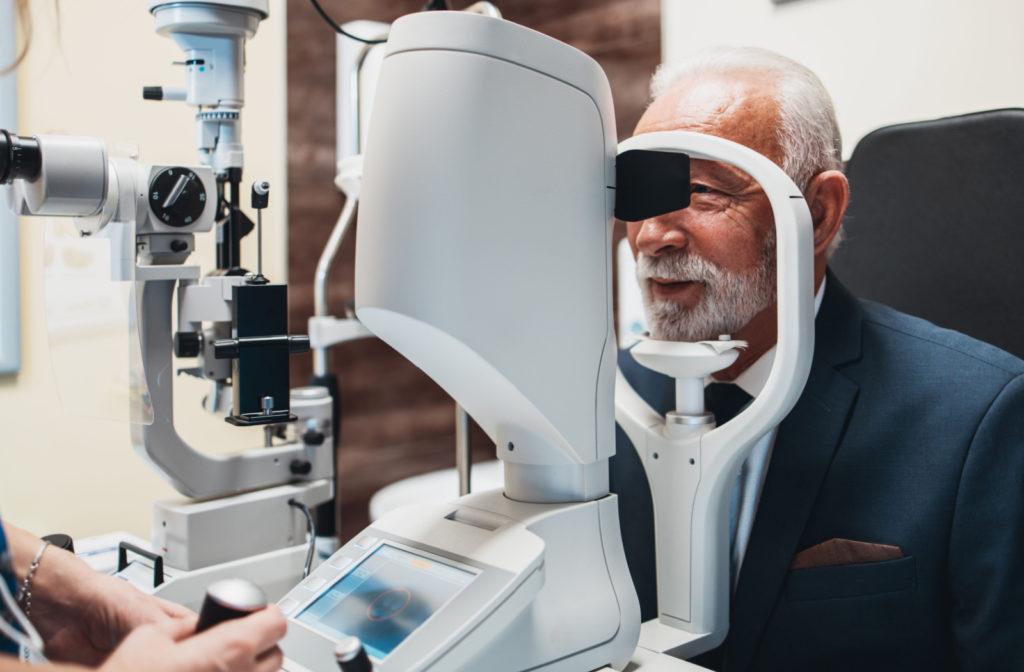Narrow-angle glaucoma, also referred to as closed-angle glaucoma, is a prevalent and highly consequential eye condition that affects millions of individuals worldwide. It is a multifaceted and degenerative disease that, if left undiagnosed and untreated, can rapidly lead to irreversible vision loss.
This condition occurs when the drainage angle of the eye becomes blocked, resulting in increased intraocular pressure and potential damage to the optic nerve. Early detection and timely intervention are crucial in managing this condition and preserving long-term visual health.
Causes of Narrow Angle Glaucoma
Narrow-angle glaucoma is caused by an increase in pressure inside the eye, known as intraocular pressure. This increased pressure is usually due to a blockage in the drainage system of the eye, which prevents fluid from draining properly. This causes a buildup of fluid and an increase in pressure, leading to damage to the optic nerve.
Various risk factors can contribute to the development of narrow-angle glaucoma, including:
- Age: As individuals age, their risk for developing glaucoma increases.
- Genetics: Having a family history of glaucoma can increase one’s likelihood of developing the condition.
- Ethnicity: Individuals of African, Asian, and Hispanic descent have a higher risk for narrow-angle glaucoma compared to other ethnic groups.
- Medical conditions: Certain medical conditions such as diabetes, can increase the risk of developing glaucoma.
- Use of certain medications: Some medications, such as steroids, can increase intraocular pressure and contribute to the development of glaucoma.
Symptoms & Diagnosis
Narrow-angle glaucoma often presents without any noticeable symptoms until it reaches an advanced stage. However, some individuals may experience the following:
- Severe eye pain
- Headaches
- Blurred vision
- Seeing halos around lights
If you experience any of these symptoms, it is important to seek immediate medical attention. A comprehensive eye exam can diagnose narrow-angle glaucoma and assess the level of damage to the optic nerve. This typically includes measuring intraocular pressure, examining the drainage angle of the eye, and testing peripheral vision.
Treatment Options
The primary goal of treatment for narrow-angle glaucoma is to reduce intraocular pressure and prevent further damage to the optic nerve. This can be achieved through various methods, including:
- Medications: Eye drops are often prescribed to lower intraocular pressure by reducing the amount of fluid produced in the eye or increasing its drainage.
- Laser surgery: In some cases, laser surgery can be used to create a small opening in the iris to improve the flow of aqueous humor and reduce pressure.
- Conventional surgery: For more advanced cases, conventional surgery may be necessary to create a new drainage channel for fluid to leave the eye.
It is important to work closely with your eye doctor to determine the best treatment plan for your individual condition.

Prevention
While there is no guaranteed way to prevent narrow-angle glaucoma, there are steps you can take to reduce your risk:
- Regular eye exams: Comprehensive eye exams can detect any signs of glaucoma early on and allow for prompt treatment.
- Manage medical conditions: As mentioned, certain medical conditions can increase your risk of glaucoma. Work with your doctor to manage these conditions.
- Know your family history: If you have a family history of glaucoma, it is important to inform your eye doctor as you may be at a higher risk. They may recommend more frequent eye exams.
- Take prescribed medications: If you have been diagnosed with narrow-angle glaucoma or are at high risk, make sure to take any prescribed medications regularly and as directed by your doctor. This can help lower your intraocular pressure and prevent further damage to the optic nerve.
Take Charge of Your Eye Health Today with Total Vision
Narrow-angle glaucoma is a serious eye condition that can lead to vision loss if left untreated. However, with early detection and proper treatment, it can be managed effectively. It is important to understand the symptoms and risk factors of this condition and take preventive measures such as regular eye exams and managing any underlying medical conditions.
At Total Vision in Rancho Bernardo, we are committed to providing comprehensive eye care and working closely with our patients to develop personalized treatment plans. If you have any concerns about narrow-angle glaucoma or any other eye conditions, please don’t hesitate to schedule an appointment with us. Your vision is our top priority. Don’t wait until it’s too late, take charge of your eye health today!



